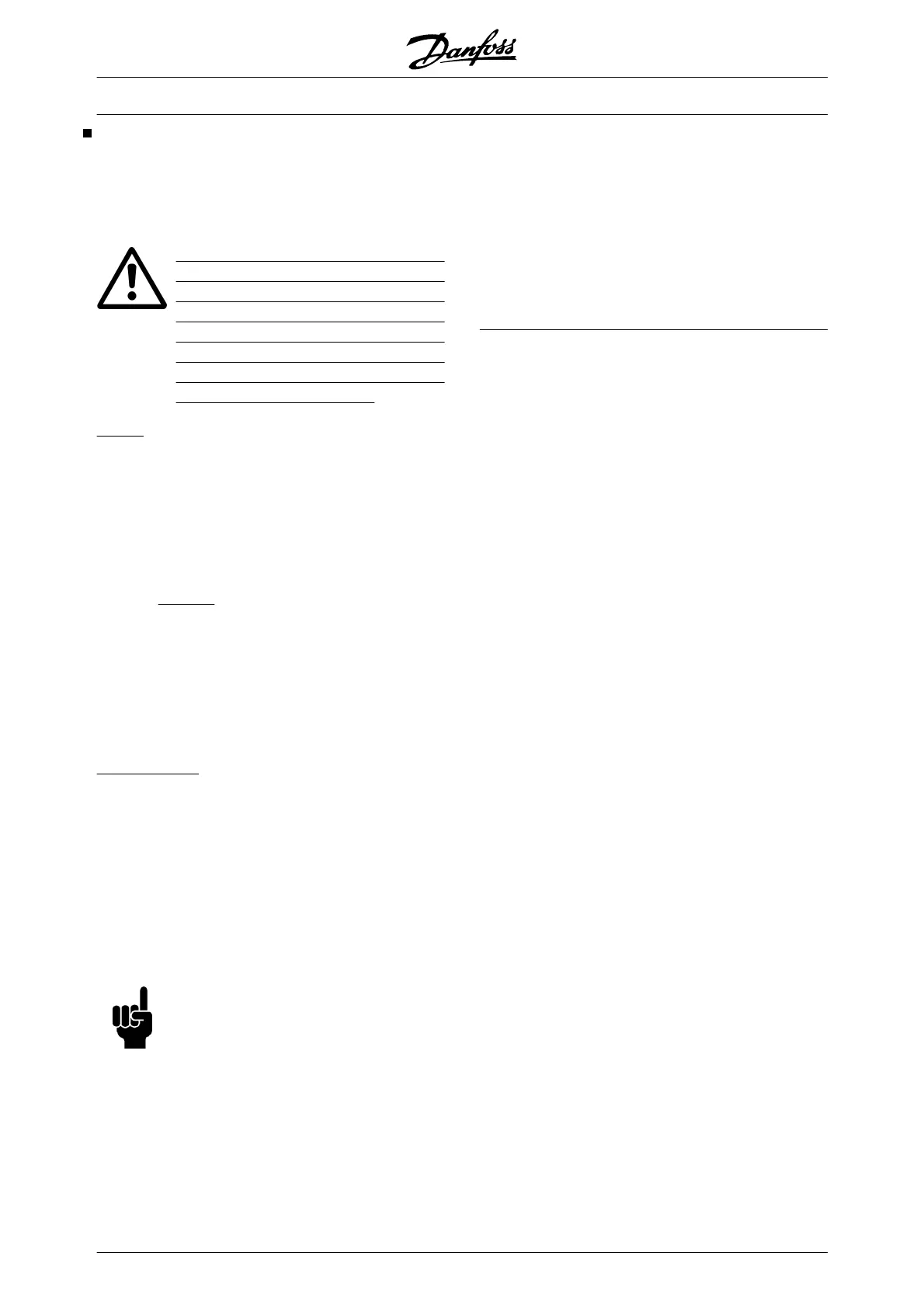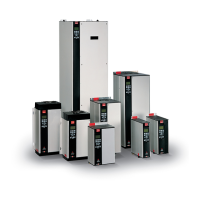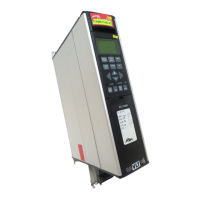Aggressive environments
In common with all electronic equipment, a frequency
converter contains a large number of mechanical and
electronic components, all of which are vulnerable to
environmental effects to some extent.
The frequency converter should not there-
fore be installed in environ- ments with
airborne liquids, particles or gases capa-
ble of affecting and damaging the elec-
tronic components. Failure to take the
necessary protective measures increases
the risk of stoppages, thus reducing the
life of the frequency converter.
Liquids can be carried through the air and condense
in the frequency converter. In addition to this, liquids
may cause corrosion of components and metal parts.
Steam, oil and salt water may cause corrosion of com-
ponents and metal parts. In such environments, equip-
ment with enclosure rating IP 54 is recommended. As
an extra protection, coated printet circuit boads can be
orded as an option.
Airborne
Particles such as dust particles may cause
mechanical, electrical or thermal failure in the frequen-
cy converter. A typical indicator of excessive levels of
airborne particles is dust particles around the frequen-
cy converter fan. In very dusty environments, equip-
ment with enclosure rating IP 54 or a cabinet for IP 00/
IP 20/Nema 1 equipment is recommended.
In environments with high temperatures and humidity,
corrosive gases such as sulphur, nitrogen and chlorine
compounds will cause chemical processes on the fre-
quency converter components.
Such chemical reactions will rapidly affect and dam-
age the electronic components. In such environments,
it is recommended that equipment is mounted in a
cabinet with fresh air ventilation, keeping aggressive
gases away from the frequency converter.
An extra protection in such areas a conformal coating
of the printed ircuit boards can be ordered as an option.
NB!
Mounting frequency converters in aggres-
sive environments will increase the risk of
stoppages and furthermore considerably
reduce the life of the converter.
Before the installation of the frequency converter, the
ambient air should be checked for liquids, particles and
gases. This may be done by observing existing instal-
lations in this environment. Typical indicators of harm-
ful airborne liquids are water or oil on metal parts, or
corrosion of metal parts.
Excessive dust particle levels are often found on in-
stallation cabinets and existing electrical installations.
One indicator of aggressive airborne gases is black-
ening of copper rails and cable ends on existing in-
stallations.
See also Instruction MN.90.IX.YY
VLT
®
5000 Design Guide
118 MG.52.B2.02 - VLT
®
is a registered Danfoss trademark
